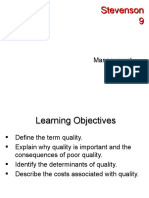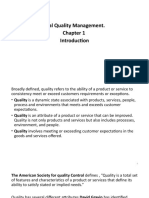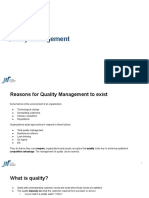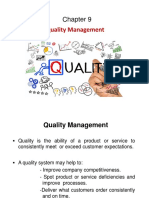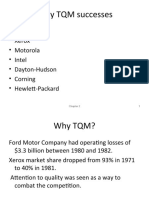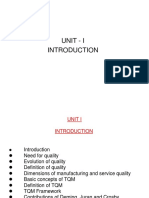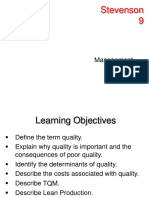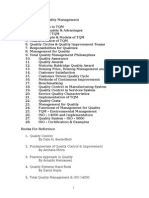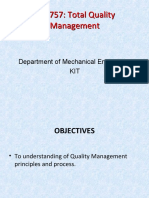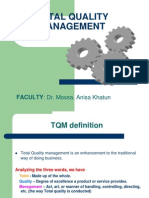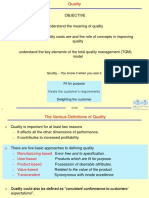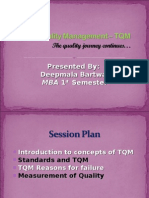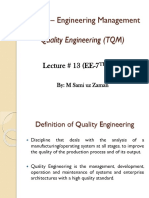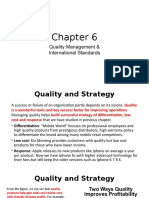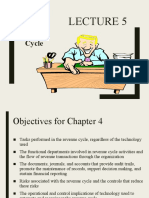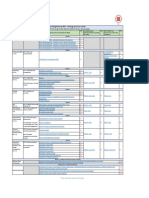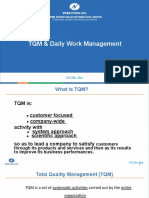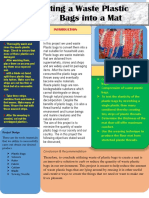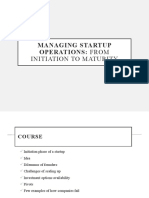0% found this document useful (0 votes)
2 views20 pagesPOM15 - Intro To Quality
The document discusses the concept of quality and Total Quality Management (TQM), emphasizing the importance of meeting customer expectations and the involvement of all organizational members in quality improvement. It outlines the dimensions and determinants of quality, the consequences of poor quality, and the ethical considerations surrounding quality standards. Additionally, it introduces Six Sigma as a method for enhancing quality and achieving competitive advantage through better business processes.
Uploaded by
25101011-studentCopyright
© © All Rights Reserved
We take content rights seriously. If you suspect this is your content, claim it here.
Available Formats
Download as PPT, PDF, TXT or read online on Scribd
0% found this document useful (0 votes)
2 views20 pagesPOM15 - Intro To Quality
The document discusses the concept of quality and Total Quality Management (TQM), emphasizing the importance of meeting customer expectations and the involvement of all organizational members in quality improvement. It outlines the dimensions and determinants of quality, the consequences of poor quality, and the ethical considerations surrounding quality standards. Additionally, it introduces Six Sigma as a method for enhancing quality and achieving competitive advantage through better business processes.
Uploaded by
25101011-studentCopyright
© © All Rights Reserved
We take content rights seriously. If you suspect this is your content, claim it here.
Available Formats
Download as PPT, PDF, TXT or read online on Scribd
/ 20


